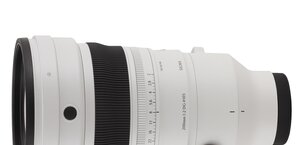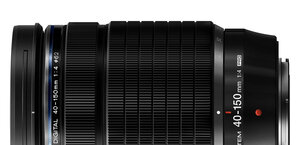Venus Optics LAOWA Argus 33 mm f/0.95 CF APO
4. Image resolution
The Venus Optics LAOWA Argus 33 mm f/0.95 CF APO is an instrument designed for APS-C/DX sensors so, during its test, our editorial Nikon Z7 was set at DX mode. As we express MTF50 functions in lpmm it doesn't matter whether we use FX or DX mode, all results are directly comparable and all reference levels remain valid.
Let's check how the Argus 0.95/33 fared in our resolution test – an appropriate graph, with results in the frame centre and on the edge of the APS-C/DX sensor, you can find below.
Please Support UsIf you enjoy our reviews and articles, and you want us to continue our work please, support our website by donating through PayPal. The funds are going to be used for paying our editorial team, renting servers, and equipping our testing studio; only that way we will be able to continue providing you interesting content for free. |
- - - - - - - - - - - - - - - - - - - - - - - - - - - - - - - - - - - - - - - - - - - - - - - -
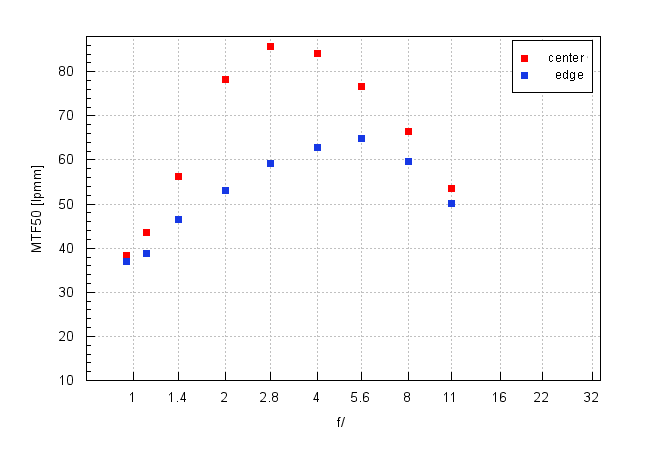
In the frame centre at the maximum relative aperture image quality is not the best; in fact it would be difficult to call it even decent. Still the situation improves very quickly on stopping down. Already by f/1.1 the results are above the decency level, by f/1.4 they become really good and from f/2.0 onwards you deal with outstanding levels. A very fast aperture of the Argus allows it to achieve a record resolution by f/2.8 and it amounts to 85.6 +\ 1.5 lpmm, almost 2 lpmm higher than in the case of the Nikkor Z 50 mm f/1.8, the former record-holding lens.
You can have some reservations when it comes to the edge of the frame. With such a focal length, a big difference between resolution values you see in the centre and on the edge is rather grating. You deal with an extremely fast aperture, that's true, but not with a wide angle of view. I think sharpness should have been spread more evenly across the frame.
As a result, by f/0.95 and by f/1.1 images are of weak quality; they become decent only near f/1.4. The increase of resolution on stopping down is far slower than in the centre so the maximum results of over 60 lpmm can be reached only by f/5.6.
To sum up, the lens made the best use of its fastness, never experiencing any problems with breaking resolution records in the frame centre. If only the performance on the edge of the APS-C/DX sensor matched a bit better the performance in the centre, it would be really great. Mind you, overall the situation is not so bad – with such parameters it wasn't easy to get sharp images across the frame, starting from the maximum relative aperture. I think the lens will be a joy to use anyway and it is the best summary of its performance in this area.
At the end of this chapter, traditionally, we present crops taken from photos of our resolution testing chart which were saved as JPEG files along with RAW files we used for the analysis above.
| Nikon Z7, JPEG, f/0.95 |
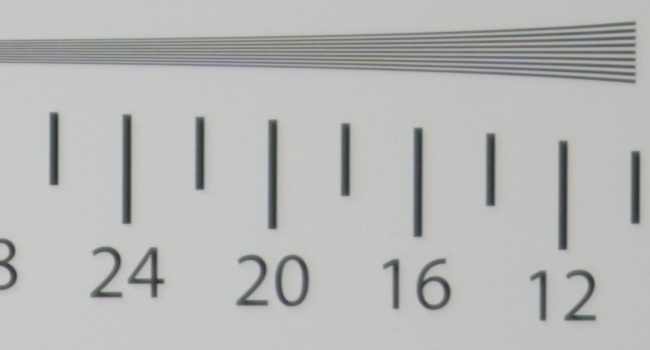 |
| Nikon Z7, JPEG, f/2.8 |
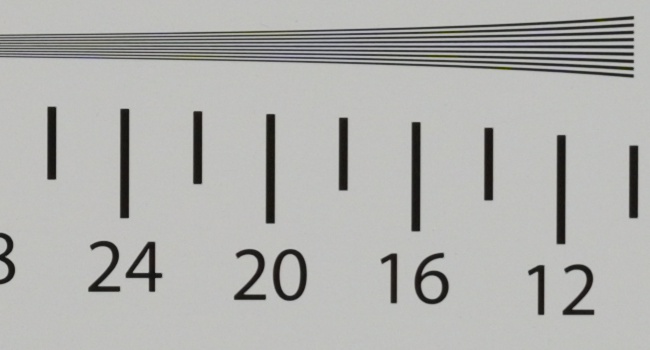 |




